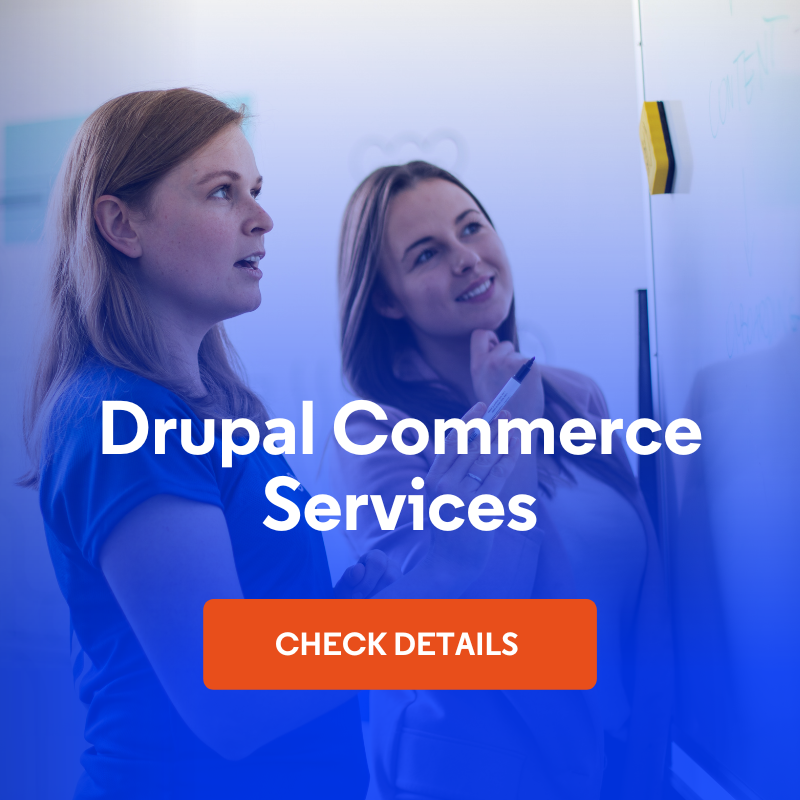
What Ecommerce Business Models Should You Consider?
There are many ways of conducting business activities on the Internet. However, choosing the right ecommerce business model isn't as easy as it may seem. Careful consideration of the available options and an analysis of your resources will allow you to select the best type of business activity and create an effective strategy for your ecommerce business.
What is ecommerce and how to choose the right online business model?
The ecommerce is an alternative to traditional sales at physical premises (shops, shopping malls, fair stands, etc.). All those exchanges of goods and services where payment and delivery take place outside physical store premises via the Internet are considered online transactions. According to the Statista portal's ecommerce report, in 2020 over two billion people worldwide bought products and services online. The Internet market is large and is constantly growing, offering its users newer and more interesting services and products, and companies adapt to the conditions and expectations of potential customers, adopting specific business models.
A business model is a kind of business plan adopted by the founder of an enterprise. Adopting a specific model is aimed at enabling the optimal use of the resources with which the entrepreneur enters the business world, generating income, and guaranteeing themselves specific profits. However, keep in mind that a business model isn't the same as a strategy, containing much more detailed information, objectives, and goals.
To define your business model, you need to decide:
- who will be your customer,
- what is the value you offer them,
- how you want to provide it to them.
E-business types can be divided according to various criteria, e.g. by comparing the legal status of the customer and seller (B2C, B2B, C2B, etc.) or by specifying the method of distribution of goods (direct sales, subscription, dropshipping, etc.). Individual business models in the ecommerce industry have their advantages and disadvantages. Find out more about them before you decide to start a business.
Ecommerce business models – division based on the relations between entities
When we mention the relations between entities, we actually mean their legal status. Almost anyone can sell something to any legal entity. Businesses may offer their products to retail customers, but also to other companies. Moreover, consumers may also earn money on sales, and they may also offer their products or services to companies.
B2C (business to consumer) – direct sale to an individual customer
A company with a B2C profile sells to end users its own products or services or those created by other brands. It’s the most common form of commerce. Every person entering any store has contact with it. We participate in B2C sales almost every day when we buy food at a grocery store, eat in a restaurant, or use the services of a hairdresser. Every purchase made in an ecommerce store is a B2C transaction if we buy as a consumer (we don't represent any company).
This type of business model is characterised by a relatively quick decision-making process during a purchase. Here, consumers are largely guided by their emotions when choosing goods. When they do shopping, they represent only themselves and want to meet their own needs – they don't have to take into account the decisions of other people, employees of the company they work for on a daily basis, or its purchasing policy.
Brew Tea Co. is an example of a B2C ecommerce store.
Due to the shorter sales cycle, B2C companies typically have a lower average basket value and fewer recurring orders than B2B companies. On the other hand, the probability of a spontaneous purchase made by the consumer is higher. By running a business using the B2C business model, you can sell any kind of products and services of many types.
B2B (business to business) – providing services or selling products to businesses
In the B2B business model, the company's clients are other businesses. The buyer may be the end user (using the product in their company), or they may resell the goods to a consumer. The services purchased by the company may be used for the internal needs of the firm (e.g. accounting services that don't create value for the company's customer, but are essential for the company's operation), or to provide a service or deliver value to a retail customer (e.g. purchase of materials to create the company's product).
An example of a B2B transaction is the purchase of notebooks from the manufacturer by an office supply store. The manufacturer produces various types of notebooks, and the store buys them to resupply the inventory and resell the products to retail customers. B2B transactions also take place between a restaurant and the wholesalers supplying it with food from which the dishes are made. Also, services may be sold on the basis of the B2B business model, e.g. an enterprise may pay for the service of creating a corporate website by a company that builds bespoke web systems and applications.
B2B transactions typically have a longer sales cycle, but a higher order value and more reordering customers.
C2B (consumer to business) – trade between a private person and a company
C2B is a relationship in which individuals sell goods and services to companies. It's good to analyze this model of cooperation between private people and businesses and consider intermediation. In this model, a properly designed ecommerce website may allow customers to publish offers of the services that they want to provide or propose products (e.g. handicrafts) so that companies can conveniently order them.
An example of such a business relationship could be the relationship between a freelancer (e.g. a photographer) and a company that needs a certain service (e.g. a product photo shoot). A web portal may be an intermediary in such an exchange. One of the intermediaries between individual specialists and businesses is the Upwork platform. A C2B transaction also occurs when a local artist (e.g. a painter) creates works that they sell to art galleries and online interior decoration stores.
Source: Upwork
The advantage of such a model is the ability to enter the business market, and thus – gain a regular customer or sell in larger quantities. This unique model allows individuals to directly access the world of business and new development opportunities. You may reap financial benefits by acting as an intermediary between the individuals who want to provide services to enterprises, or – as a private person – sell your products to companies.
C2C (consumer to consumer) – exchange of goods between individuals
The companies using the C2C model – collectively known as the online marketplace – connect consumers in order to exchange goods and services, and often earn money from transaction fees (commissions) or listing fees. However, this isn't a rule. Portals of these types may charge a membership fee or make money from advertising, etc. Such companies benefit from self-perpetuating growth – the portal gains popularity thanks to the committed sellers and customers looking for good deals, as well as the people recommending this ecommerce website to friends.
Companies of this type include the marketplaces that are popular today. There are many of them on the Internet market. Examples include Facebook Marketplace and eBay. These are specific types of online stores where the user can find products offered by more than one seller. Both individuals (C2C, C2B) and companies (B2C, B2B) may trade on such web portals.
The C2C business model provides additional income for the people who aren't yet able to open a business, or just want to sell the things they don't need anymore. The biggest challenge for businesses creating space for the exchange of goods between consumers is to provide users with high-quality ecommerce features.
Ecommerce business models divided by the method of sale
By choosing one of the above-described ecommerce business models, you basically define your customer group. Once you've decided who you want to sell your products or services to, it's time to think about how you want to do it.
Online stores
Company websites and online stores are the counterparts of traditional catalogs and order sheets. They allow selling goods and services via the Internet, as well as advertising among a larger group of potential business and individual customers than a traditional brick-and-mortar store. Of course, the concept of "online store" is very broad. After all, both an ordinary online store run by one trader and a marketplace used by thousands of businesses and individuals may be defined as an online store.
In the case of a marketplace, there can be many types of relationships. A company providing a sales platform to businesses enters into a B2B relationship with them (sale of services from business to business), but also has the ability to sell products directly to retail customers (B2C). There is a B2C relationship between sellers and consumers (companies sell to individual customers). C2B and C2C transactions may also take place on marketplaces.
Rover is a service marketplace.
The advantages of online stores include the unlimited sales range. You can sell locally, domestically, and even beyond the borders of your country, because thanks to the Internet you have access to a larger group of potential customers. You can offer your customers more attractive prices than the businesses with brick-and-mortar stores because you save on renting the premises.
Wholesale of customized orders
Wholesale purchases usually take place in the B2B model. Wholesale may be conducted through an online store where companies will create their corporate accounts, but this isn't necessary. The employees of a special purchasing department are most often responsible for the purchases in a company. They place orders by phone and email, on the basis of the product catalog delivered to the company in paper form or posted on a website.
Wholesale purchases are often more profitable for business due to individual pricing, the possibility of negotiating rates, and large discounts (or other attractive offers, e.g. shopping in a package with freebies). Such offers also occur in B2C relations, e.g. when a business has to sell a large number of goods in a short time. When deciding on such a model, you need to remember that customers will expect the availability of large quantities of a given product, but also a relatively low price. Chances are that if the buyer is satisfied with your offer, they will quickly become your regular customer.
Dropshipping
Dropshippers mediate between customers and sellers without bringing products to their own warehouses. They carry out transactions but don't physically own the things that are sold. A dropshipper is therefore simply an intermediary that connects buyers with manufacturers. They may sell using the B2B and B2C ecommerce business models.
How does it work exactly? The customer receives the ordered product from the manufacturer, but an intermediary (dropshipper) participates in the sales process. Due to the fact that they process the transaction, the product's packaging will bear their logo, and from the customer's point of view, the product was delivered directly from the dropshipper (although in fact, they don't have the sold product at all). The earnings of such a business come from the difference between the wholesale price and the retail price.
Notebook Therapy is a dropshipping store.
There are many easy-to-use tools on the market (e.g. Spocket or SaleHoo) that allow dropshipping businesses to integrate their web portals with the systems of suppliers from around the world. It's also possible to create solutions of this type tailored specifically to the needs of a given company. This type of business doesn't require a very large own contribution at the beginning. The entrepreneur doesn't have to estimate the demand and buy or store products at a warehouse.
Subscription model
A subscription is based on recurring sales of goods or services to a specific customer (usually as part of a predetermined package). When we think about this form of sale, we imagine buying access to digital products, i.e. products that don't have a physical form (e.g. e-books, templates for creating web pages or graphics, podcasts, movies, online training courses, music). However, the subscription model doesn't have to apply only to digital products. You might as well subscribe to a printed magazine or a delivery of fruits to your office every Thursday. You can sell products and services in any model (B2B, B2C, C2B, and C2C), although some types of services will be more popular with business customers.
A subscription is based on cyclical charging of the amount specified in the contract with the customer until they wish to stop collaboration by unsubscribing from the service on the platform or when contacting the seller. The subscription model is aimed at long-term collaboration. After acquiring a new customer, one of the most important tasks of a business is to keep them.
A definitive advantage is that in the subscription model you are more sure of your earnings. Subscriptions may last 6, 12, or 24 months. You know how much time you have to establish a relationship with your customer and convince them to renew their subscription. You also have the option of interesting them in your other products or services. Additionally, when a customer shows up and decides to make a purchase, you receive a specific amount for a specific duration of the service.
White labeling and private labeling
White labeling means putting your own name and brand on a product that's being regularly produced by another company. Using such an approach to business allows sellers to guarantee their consumers more attractive prices than those offered by well-known brands producing similar products while ensuring comparable quality. This is possible because the business doesn't have to incur the costs of hiring employees for production and maintaining factories. When choosing this ecommerce business model, it's worth bearing in mind that a conscious customer may not trust our company if they don't receive detailed information about the production process.
In the case of private labeling, the seller enters into a kind of collaboration with the manufacturer. The brand "hires" the manufacturer (their production lines, employees) to create a unique product for its exclusive use. Such an approach allows the brands that have a specific vision, but don't have a large budget and can't afford to invest in creating a production line, to enter the market.
How to choose the right ecommerce business model for your company?
Before you choose the right type of online business, it's worth analyzing your expectations and the available business models carefully. Think about what your resources are, what's your idea for a product or service, and to whom you want to sell it.
1. Define your target group
You don't have to start by creating a detailed persona (description of specific examples of customers). When deciding to start a new business, you need to know whom you want to sell to – individual clients, business clients, or maybe both these groups? Once you've determined whether you want to work with businesses or consumers, it's time to define your target groups more specifically. You're probably wondering why it's so important to know the approximate age, gender, or interests of the customers. This is the only way you can provide them with the best ecommerce experience and conduct effective advertising efforts. By creating a detailed strategy, you'll spend more time analyzing potential customers' preferences and ways of advertising.
2. Determine the value of your product for the selected market
What is your product or service? Will it satisfy a niche market, or will it be an alternative version to similar, already existing products? Assessing the value of your product is essential to pre-determining the rivals you’ll be competing with when you start your business. Knowing about the quality of your competitors' products, services and advertising will allow you to set business goals, determine your chances of success, and estimate future advertising expenditure. How do you handle research? Visit the websites of the companies that offer similar services and product and read the descriptions of their offers and blogs. Also, visit their social media pages and check out how their ideas differ from yours.
3. Determine which sales tools you have access to
A company starting an online business needs to carefully evaluate its budget and decide which tools are necessary, and which are only useful. You don't need to create advanced ecommerce solutions at the beginning. You can use the sales platforms (e.g. marketplaces) provided by well-known companies.
An alternative is to create your own simple yet functional online store that can be easily expanded in the future. You can create it without straining your budget, using Sylius, the open source e-commerce platform.











